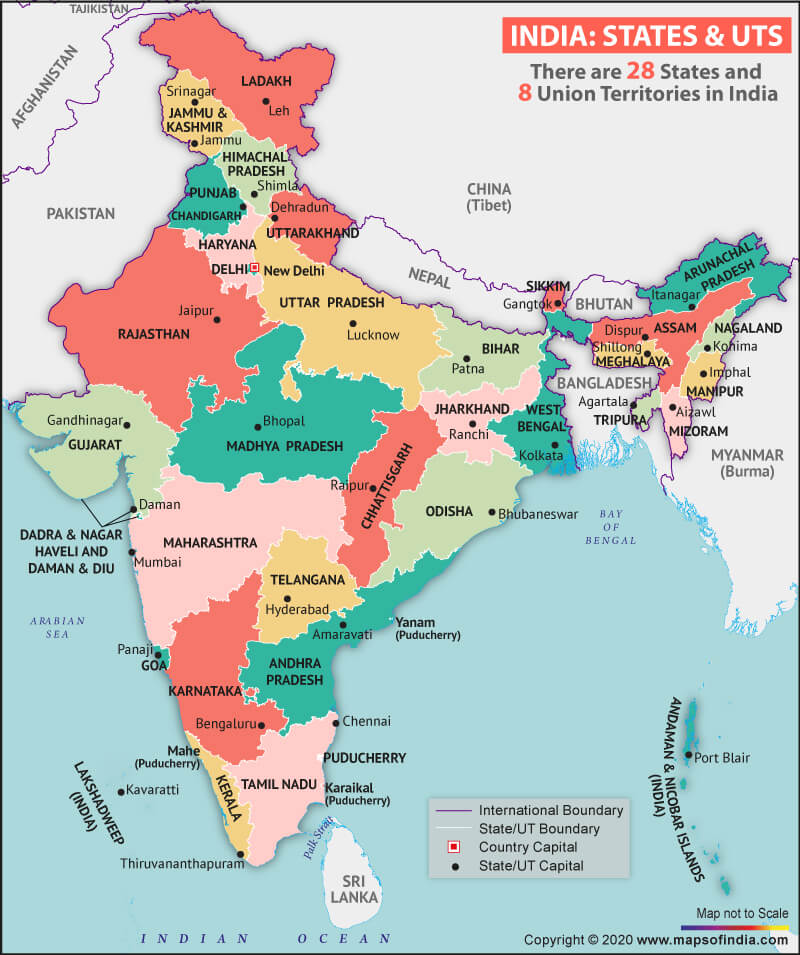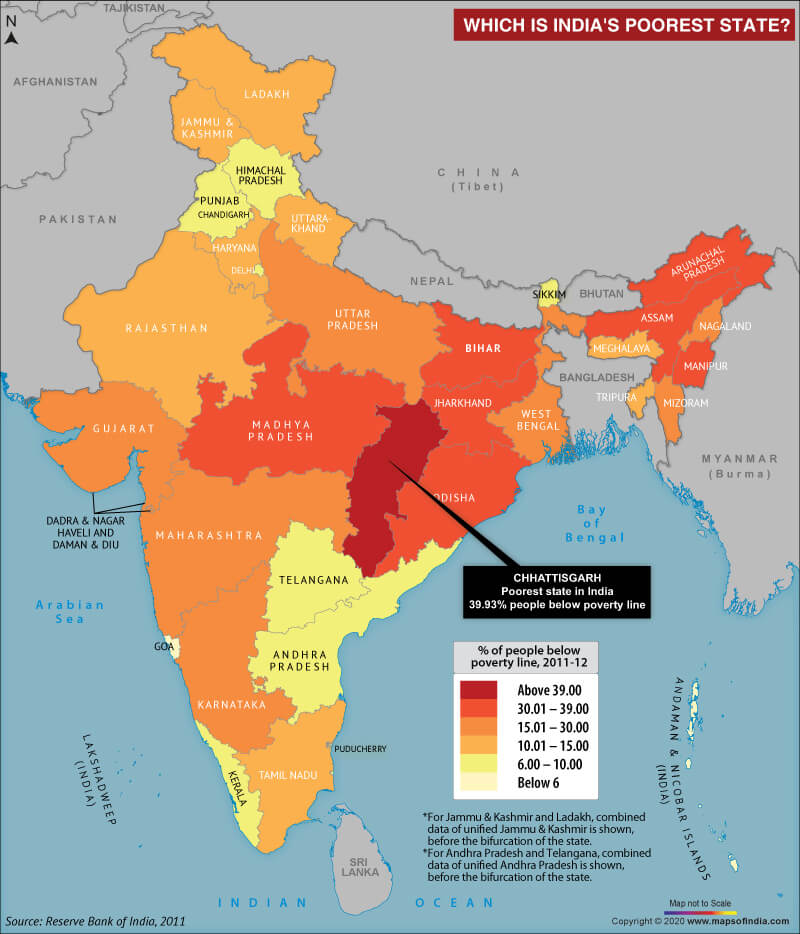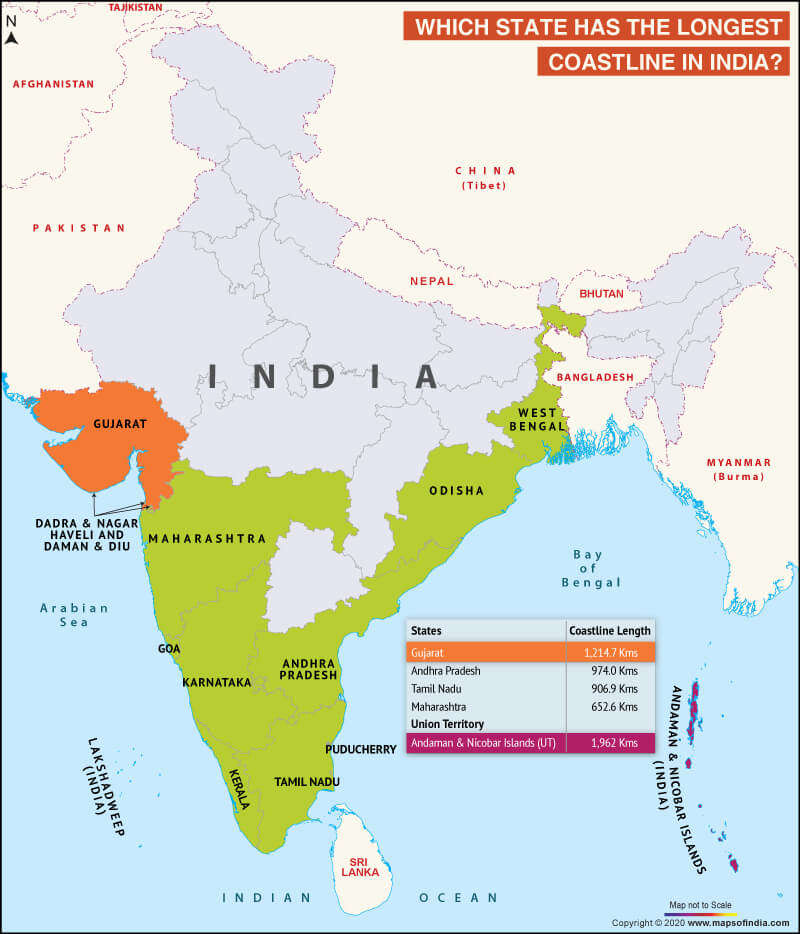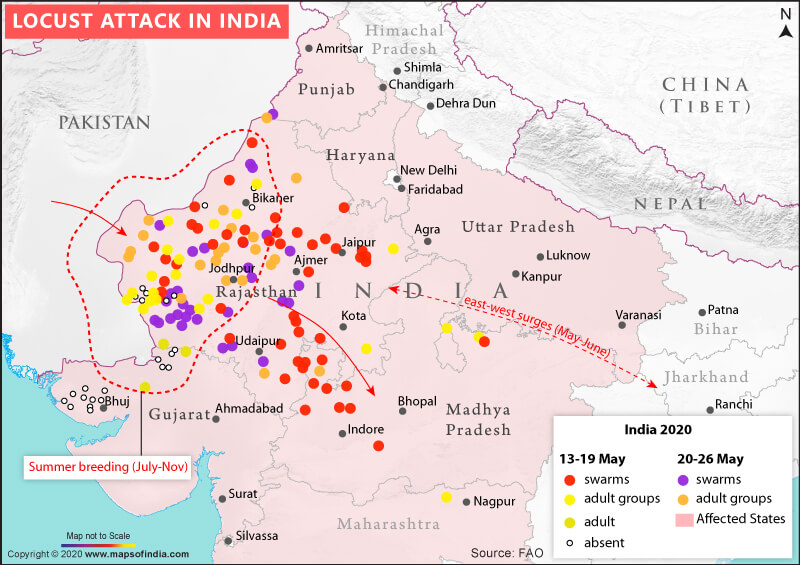

India has been facing natural calamities since January 2020. The COVID-19 cases in the country are on the rise, fire in Uttarakhand forest and now locusts attack in several states have added another fury.
Here is why tackling this issue is essential:
Locusts may lead to famine
Locusts are tropical grasshoppers, harmless for human beings. The insects can travel up to 150 kilometres a day, but their travel depends on the speed of the wind. Locust swarms devastate crops and vegetation. Ruining of a large scale of the crop may lead to famine and devastation in affected areas.
Locusts are ferocious eaters of flowers, fruits, seeds and also damage plants due to their weight as they fall on the plant in massive numbers. It is estimated that a group of locusts of the desert eat as much food as equal to 10 elephants in a day. But it is noticeable that the size of the swarms is not always small; it is variable.
Worst locust attack in 3 decades
The present locust attack in India is the worst since 1993. India had not seen the locust plague cycle after 1962 until the country observed large-scale locust attacks in 1978 as well.
The locust forecasting officer at United Nations food and agriculture organisation said that the current locust outbreak is the biggest in 25 years in Ethiopia and Somalia, 27 years in India, 70 years in Kenya.
Scientists are saying that the locust attack occurred amid additional cyclones in the African countries.
How locusts reached India?
Desert locusts are natives of the Arabian Peninsula. It is a common phenomenon that locusts arrive in Rajasthan and Gujarat every year following the monsoon winds. On average, ten locust attacks are common in the country in a normal year. The weather in Saudi Arabia has changed its mood in the last two years. Saudi Arabia received unusually excessive rain in 2018 along with two cyclones also named Mekunu in May and Luban in October.
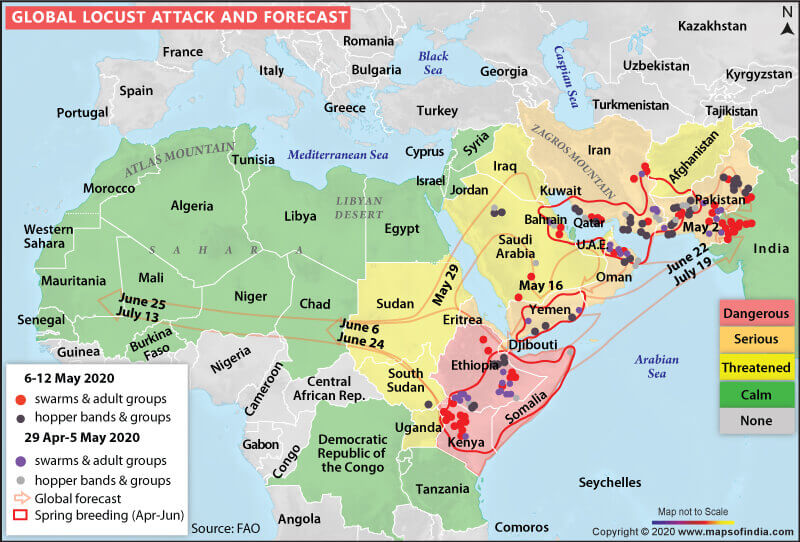
Then gradually, locusts breeding started flourishing in the Arabian Peninsula from June 2018 to March 2019 that caused a huge increase of 8,000-fold in locusts’ numbers. The rise of locusts in the Arabian Peninsula has badly hit Rajashtan, Gujarat and some other places in the country. Therefore, desert locusts entered from the Arabian Peninsula.
The ruin of crops in several states
Currently, locusts are destroying crops in several states of India. Some breed of locusts came from Pakistan’s Balochistan area and Iran. It is expected that locusts that are breeding in some of the African nations such as Djibouti, Eritrea, Ethiopia, and Somalia may reach India by next month.
Locust attacks badly hit some of the states. Here is a look at how the states are fighting to overcome from locust swarms.
Rajasthan
Rajasthan is known for its desert terrain, so the desert locusts have brought lots of devastation in the state, and ruined crops spread about 5,00,000 hectares in the state. Some of the districts of Rajasthan like Sri Ganganagar, Bikaner and Barmer were on the receiving end. Swarming locusts damaged the rabi crops in the state. Farmers of Rajasthan are dejected due to a massive loss of crops. Officials have been trying to overcome this disaster, but the problem is not likely to be over soon. Agricultural officials are spraying chemicals to end the wrath of locusts and save crops from more destruction.
Madhya Pradesh
Locusts swarms have taken the aerial route from Iran to Pakistan and then entered into the Indian state Rajasthan, and now locusts have entered into Madhya Pradesh. Locusts swarms badly damaged crops in several districts. Locusts ruined the vegetation and standing crops at Morena in Madhya Pradesh.
Gujarat
Gujarat has been facing the locusts’ problem for the last five months. The deadly insects have created havoc in several villages like Lodiya, Savarkundla, Khambha Jaffarabad, and Botad of Amreli district in Gujarat. Locust swarms are hovering in more than 16 out of 52 districts in the state. The insects are gradually moving westwards. The farmers of Gujarat are worried that insects are likely to damage their moong beans crops. This crop is cultivated in summer. The Gujarat government has established a control room in the locust-affected regions. Efforts are being made to control locust swarms in the state.
Uttar Pradesh
Uttar Pradesh has not escaped from the attack of locusts. Some of the districts of UP like Jhansi, Agra, and Delhi’s neighbouring Guatam Budhh Nagar have witnessed the swarms of locusts. According to the state government, the locust attack is like to damage crops in 17 districts — Jhansi, Mahoba, Hamirpur, Agra, Aligarh, Mathura, Bulandshahr, Hathras, Etah, Firozabad, Mainpuri, Etawah, Farrukhabad, Auraiya, Jalaun, Kanpur and Lalitpur in Uttar Pradesh. The UP government has ordered the officials to be prepared for chemical spray.
Maharashtra
Maharashtra has been already facing the backlash of COVID-19 pandemic, while locusts attack has brought another havoc in the state. A swarm of desert locusts entered the eastern part of Maharashtra. Some of the villages in the Vidarbha area have been severely affected due to locust’s attack. The government has ordered a chemical spray on crops and vegetation in the affected regions of Maharashtra.
Maharashtra’s Joint Director of Agriculture Ravindra Bhosale said, “The swarm of desert locusts entered the state from Amravati district. It then went to Wardha, and now it is in Nagpur’s Katol tehsil.”
Punjab
Punjab is another state that has been reeling under a locust attack for many months. A couple of months ago locusts wrecked the fields of some of the bordering areas of Pakistan like Roopnagar and Bareka villages in Fazilka district. The Punjab government has alerted the district administration to activate control rooms at the district headquarters and be ready to face any challenge amid locust’s attack.
Locusts generally move across states and are enticed by lush green fields in search of food. The insects have already ruined crops in some parts of the country. But it is expected that the situation may turn more dangerous in the coming days.

